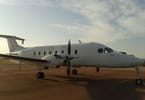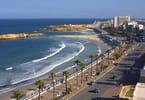The Harvard Club of New York at 27 West 44th Street was originally built in 1894 (with major additions in 1905, 1915, 1947 and 2003) and designed by McKim, Mead & White. Its classic Georgian design recalls the buildings at Harvard Yard in Cambridge. In 1966, the Landmarks Preservation Commission designated the Harvard Club of New York as a landmark despite the opposition of the Harvard Club to the proposed designation. It was one of the first buildings in New York to be named a landmark. It is also listed on the U.S. National Register of Historic Places.
Originally founded without a location, the club first rented a townhouse at 11 West 22nd Street. In 1888, land was acquired on 44th Street, and a new clubhouse was built near the New York Yacht Club, Yale Club and the General Society of Mechanics and Tradesmen of the City of New York. At the time, Harvard House, as members called the new clubhouse, was being constructed, members bought land at 31 West 44th Street for future expansion.
The original clubhouse was designed by Charles Follen McKim of McKim, Mead & White in 1884. The Designation Report (January 11, 1967) of the Landmarks Preservation Commission described it as follows:
Sitting erect and dignified on West Forty-Fourth Street is this trim and elegant Georgian club house. The charm of this building lies in its red brick with limestone trim and in its intimate scale, the delicate refinement of its handsome detail, and the pleasing harmony of its well related architectural components. The front elevation consists of a handsome motif, where a main entrance doorway at street level is surmounted by a central round headed window, flanked by two pairs of limestone Ionic columns which rest on the second-floor ledge and support the delicately refined third floor cornice. Directly above this and centered between two windows is the handsomely carved shield of Harvard University. At the roof line, the stone coping, covering the brick parapet wall, supports a central crowning element composed of a star-studded stone ball flanked by two horizontally placed consoles.
As club membership expanded, the first addition was built in 1905 which included the magnificent Harvard Hall. Many architectural critics consider Harvard Hall as the finest clubroom in the Western Hemisphere, if not the world. With its three-story-high ceiling and beautiful wood paneling, it is a rare and special place. The Forty-Fifth street elevation is considered by many to be the equal in quality to that of the Forty-Fourth street entrance façade. This exterior wall contains three-story round- headed windows set between brick pilasters, which help to light Harvard Hall. The 1905 addition also contained a Grill Room, a new library, a meeting room, a billiard room and two floors of bedrooms for overnight stays.
The Bulletin of the Harvard Club of October 20, 1902 devoted most of that issue to describing plans for the first expansion of the Club: “The Harvard Club of N.Y.C. has just adopted plans for an addition to the Club House which will surpass in usefulness and comfort any building of its character in the world.” When this work was completed, a homecoming was held in Harvard Hall, December 7, 1905 with Harvard University President Charles W. Eliot as the principal speaker.
Ten years later, architect Charles McKim designed a seven-story tower in 1915. It added a bar, a 300-seat formal dining room, more meeting rooms and bedrooms, squash courts and a swimming pool called the Plunge on the seventh floor. During the Great Depression, dreams of expansion were tabled even though membership continued to grow. During World War II, the demand for bedrooms was so great that the Plunge swimming pool was floored over to create dormitory space where members could rent a cot for the night.
After World War II, as the G.I. Bill funded veterans to go to college, Harvard’s enrollment soared. Subsequently, membership in the Harvard Club increased causing it to embark on another expansion by rebuilding the adjacent five-story structure at 33 W. 44th Street (which the club had owned since 1931). However, the floors above the street level did not align with the Clubhouse. Furthermore, the top three floors were constructed of combustible materials and legally could not be used for clubrooms. These three floors were demolished and the first two floors provided additional staff offices, and expansion of the Ladies Dining Room, the men’s restroom and the Main Bar.
As membership increased to more than 10,000 members in 2000, the Club decided to expand by constructing a new structure on the site occupied by the small building at 35 West 44th Street. The design challenge faced by the architectural firm of Davis Brody Bond was that the site was located between Charles McKim’s landmark Harvard Clubhouse and Warren & Wetmore’s exuberant New York Yacht Club. The controversial eight-story glass and limestone addition to the Harvard Club of New York opened at the end of 2003 to mixed reviews. “It was an exercise in respect,” said Christopher K. Grabe; a partner at Davis Brody Bond, “trying to complement existing historic buildings with a new building designed and constructed in its own time frame.”
Novo krilo od 30 miliona dolara i 41,000 kvadratnih stopa djelimično je finansirano prodajom slike Džona Singera Sardženta, "Igra šaha" za 12.5 miliona dolara. Zgrada široka 50 stopa ima predvorje pristupačno za osobe s invaliditetom; nove banket i konferencijske sale; 16 dodatnih soba za goste (da bi ukupno bilo 73 soba za goste); nove administrativne kancelarije na šestom spratu; prošireni duplex fitnes centar i dodatni tereni za skvoš. Projekat je takođe obezbijedio poboljšane objekte u stražnjem dijelu kuće, uključujući modernu kuhinju, sa pećnicama za pizzu i popove, novi glavni bar, nove toalete za muškarce i žene i proširenu sobu za roštilj.
Harvard klub u New Yorku konstantno nadmašuje druge univerzitetske klubove u prihodu po raspoloživoj sobi (Princeton, Yale, Cornell, Penn) iako 22% njegovih soba za goste nema privatna kupatila. Više od 11,000 članova Kluba (manje od 24% su žene) plaćaju godišnje članarine da bi imali pristup formalnoj trpezariji, Grill sobi i baru, ukrašenim čitaonicama i biblioteci, dupleks fitnes centru, terenima za skvoš, salama za sastanke i bankete i Harvardu Hall.
It took until 1973 that the first woman was elected to Club membership. She was Heide Nitze ’62, a daughter of Paul Nitze ’28, a longtime policy adviser to American presidents. Thirty-five years earlier, the Club had a secret, separate women’s entrance that took female guests up a separate staircase and through a door camouflaged as a bookcase in the Gordon Reading Room and down into the Grill Room. In 2008, the Club elected the first-ever female president, Nicole M. Parent, a managing director at Credit Suisse who received a B.A. in economics from Harvard.
Prvi Afroamerikanac koji je diplomirao na Univerzitetu Harvard bio je Richard Theodore Greener (1844-1922) 1869. Greener je kasnije dobio LL.B. diplomirao na Pravnom fakultetu Univerziteta Južne Karoline 1876. godine, diplomirao sa odličnim uspjehom. Radio je kao dekan Pravnog fakulteta Univerziteta Howard, a kasnije kao konzul za inostrane poslove u Indiji, Rusiji i Kini. Nakon penzionisanja 1906. godine, pridružio se Harvard klubu u Čikagu, očigledno prvi Afroamerikanac koji je primljen. Prvi Afroamerikanac koji je izabran za predsjednika Kluba bio je Reginald F. Lewis (Harvard Law '71).
On April 23, 1994, the New York Times reported that “A total of 118 Harvard Club employees are on strike, strung out on raucous picket lines outside the 100-year-old clubhouse on West 44th Street off Fifth Avenue, heckling members as they come and go. “The club had a contract with Local 6 of the Hotel, Restaurant and Club Employees Union. It was trying to lower its labor costs by, among other things, requiring employees to pay 10 to 15 percent of the cost of their health insurance premiums and by redefining their jobs. The club also wanted to lower wages for new employees who work less than 1,000 hours per year and pay a $500 bonus to eligible employees who waive health coverage. “We’re just trying to get a handle on our costs, like any other business,” said Donald L. Shapiro, president of the New York Federal Savings Bank and then president of the club.
13. oktobra 1994., bučni i ometajući štrajk protiv Harvardskog kluba okončan je nakon šest mjeseci u sporazumu za koji je New York Times rekao da "izgleda da je nedostajao trijumfu kluba". Neki članovi su smatrali da je klub izgubio mnogo više nego što je dobio.
After the controversial new building at 35 W. 44th Street opened in 2004, the Harvard Club of New York never looked better. The 11,000 plus members enjoy the most completely-outfitted university club in New York including:
• 73 soba za goste - klimatizovane, Wi-Fi mogućnost, ravni HDTV, radio sa satom, madraci na jastuku, fen za kosu, sobar, posluga u sobu (u toku radnog vremena glavne trpezarije), ukrašena jedinstvenim fotografijama, banerima, posteri i drugi artefakti Univerziteta Harvard.
• Tripleks fitnes centar od 23,000 kvadratnih stopa, uključujući četiri međunarodna i tri američka terena za skvoš, najsavremeniju opremu za vežbanje, usluge masaže, časove joge i fitnesa, dostupnih sedam dana u nedelji.
• Biblioteka sa 20,000 knjiga i više od 100 pretplata na časopise i novine.
• Osamnaest sala za sastanke i bankete koje pružaju savršeno okruženje za poslovne sastanke, rođendane, vjenčanja, bar/bat micve i praznične svečanosti.
• A 300 seat formal dining room
• The less-formal Grill Room with a buffet table
• The Main Bar
In August 2014, the Harvard Club opened a new rooftop outlet on the ninth floor. It includes a rooftop bar, an outdoor terrace, locker room, guest rooms and a service kitchenette.
Never forget that the Harvard Club is primarily a private club whose major purpose is to provide for its members. Since each of those 11,000 plus members pay annual dues, they naturally feel a strong proprietary interest in the Club. Consequently, old traditions are honored and observed and change occurs slowly. Cash and credit cards are never used. Cell phones and cameras are allowed only in certain parts of the club. There are dress codes but no tipping.
On January 31, 1908, at the annual dinner in Harvard Hall, 406 men in white tie and tails heard Thomas Slocum (later President of the Club in 1924). Noting that would-be Harvard freshmen now took entrance exams at the Club, Slocum speculated on what that experience might mean to such a boy: He “comes here, and walks up three flights of stairs between pictures of Harvard dignitaries and, as he glances from side to side, he says, ‘I must get into this college so that I can join this club.”
HARVARD CLUB OF NEW YORK CITY
27 ZAPAD 44. ULICA
NEW YORK, NY 10036-6645
Lewis P. Jones, III ‘74
predsjednik
Juni 30, 2005
Kome može biti zabrinut:
Re: Reference for Stanley Turkel, MHS, ISHC
Dragi gospodine ili gospođo:
As the current President of the Harvard Club of New York City, I write this letter of reference for Stanley Turkel on behalf of the Club. Mr. Turkel served as the Acting General Manager of the Club and provided consulting services between May 2004 and May 2005.
During this same period, the Board of Managers was conducting an extensive search for a new General Manager of the Club. Mr. Turkel’s experienced leadership during his period of transition was critical in enabling the Club to maintain the high level of service our members require. In addition, he was also able to establish a rapport with the Club’s staff, both unionized and management employees, that resulted in the successful implementation of a number of managerial and operational improvements at the Club. These improvements resulted in meaningful dollar savings to the Club in both reduced overhead costs and increased operational efficiencies without compromising the Club’s commitment to quality.
If I can provide any further information that would be of assistance, please do not hesitate to contact me.
S poštovanjem,
Lewis P. Jones, III

Autor, Stanley Turkel, priznati je autoritet i konsultant u hotelskoj industriji. On vodi svoju hotelsku, ugostiteljsku i konsultantsku praksu specijaliziranu za upravljanje imovinom, operativne revizije i efektivnost ugovora o franšizingu hotela i zadatke podrške u sudskim sporovima. Klijenti su vlasnici hotela, investitori i kreditne institucije. Njegove knjige uključuju: Veliki američki hotelijeri: Pioniri hotelske industrije (2009.), Izgrađeni da traju: 100+ godina starih hotela u New Yorku (2011.), Izgrađeni da traju: 100+ godina starih hotela istočno od Misisipija (2013. ), Hotel Mavens: Lucius M. Boomer, George C. Boldt i Oscar od Waldorfa (2014.) i Veliki američki hotelijeri, tom 2: Pioniri hotelske industrije (2016.), koji se svi mogu naručiti od AuthorHouse posjetom stanleyturkel.com
ŠTA UZIMATI IZ OVOG ČLANKA:
- Godine 1966. Komisija za očuvanje znamenitosti označila je Harvard klub u New Yorku kao orijentir uprkos protivljenju Harvard kluba predloženom imenovanju.
- The front elevation consists of a handsome motif, where a main entrance doorway at street level is surmounted by a central round headed window, flanked by two pairs of limestone Ionic columns which rest on the second-floor ledge and support the delicately refined third floor cornice.
- In 1888, land was acquired on 44th Street, and a new clubhouse was built near the New York Yacht Club, Yale Club and the General Society of Mechanics and Tradesmen of the City of New York.























